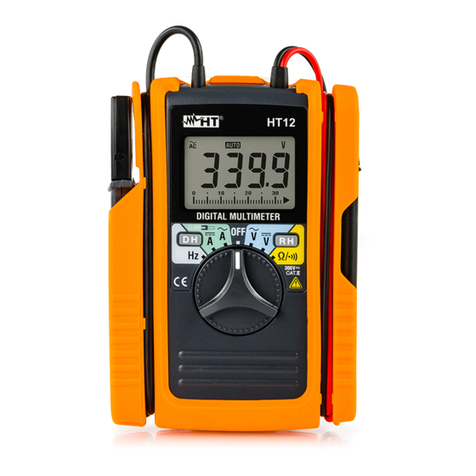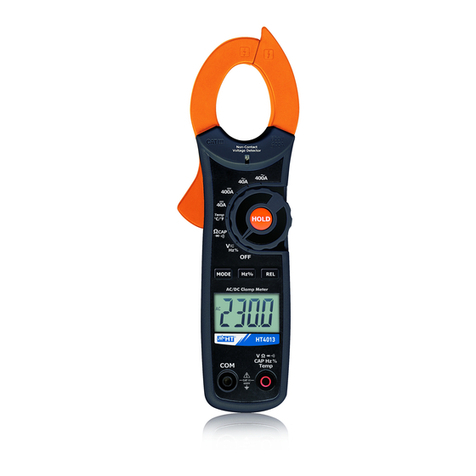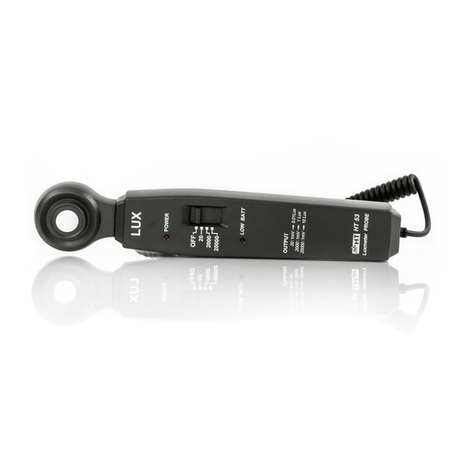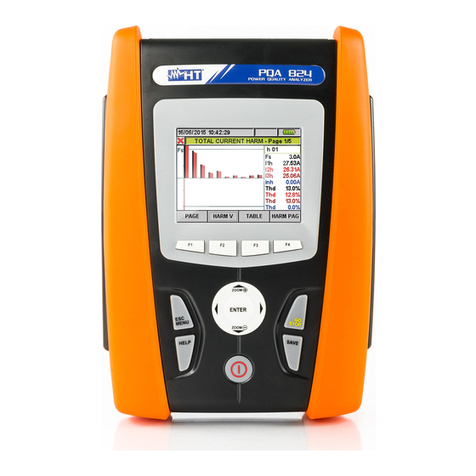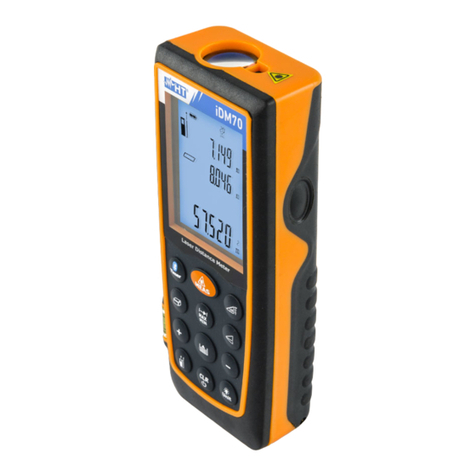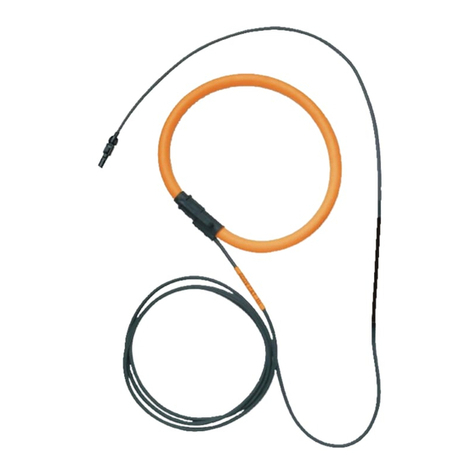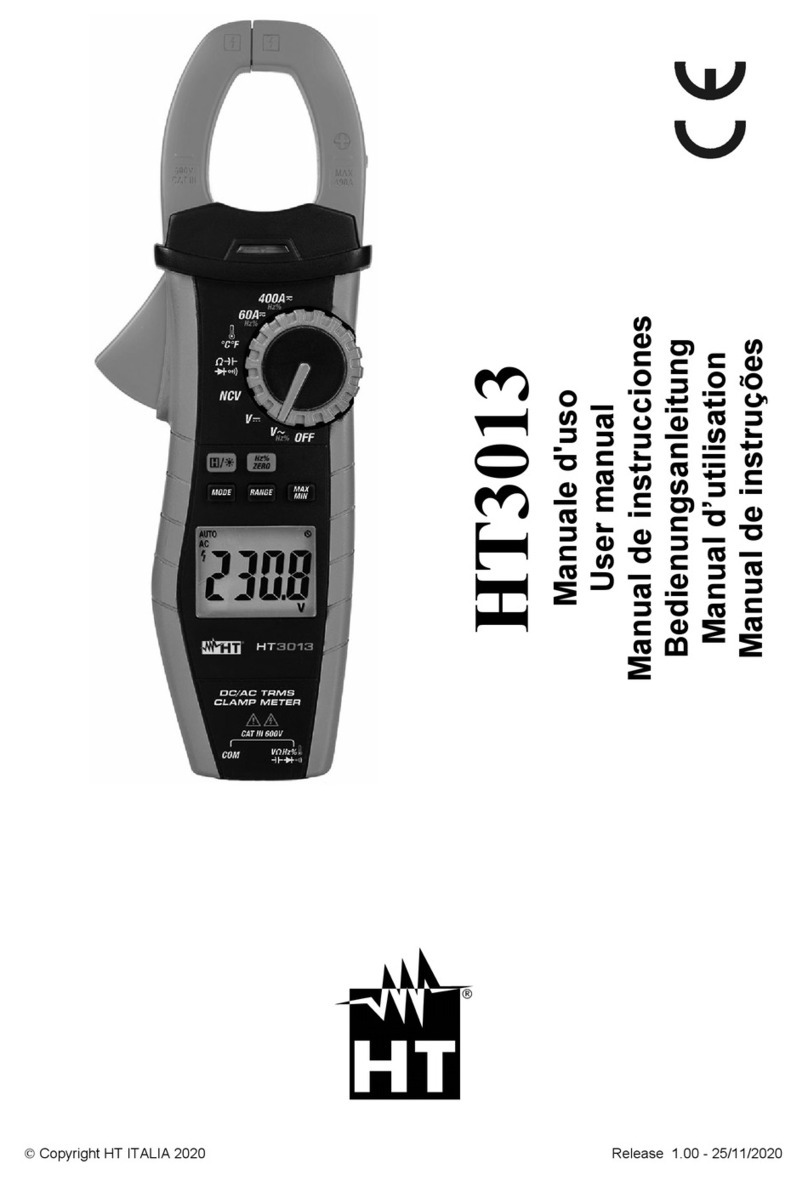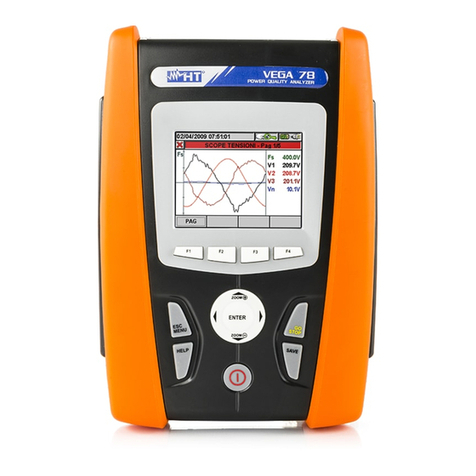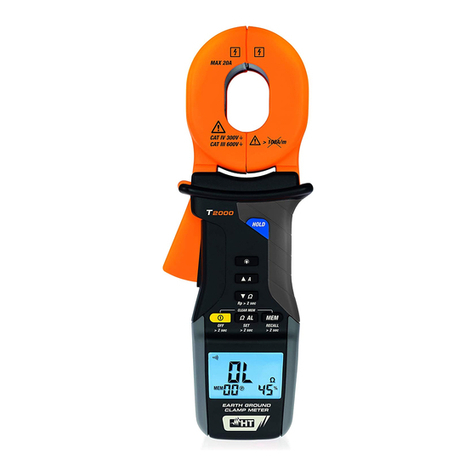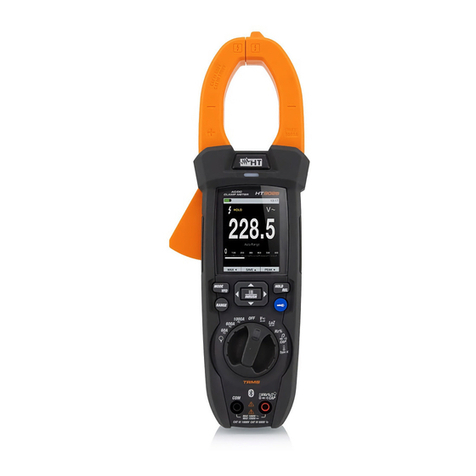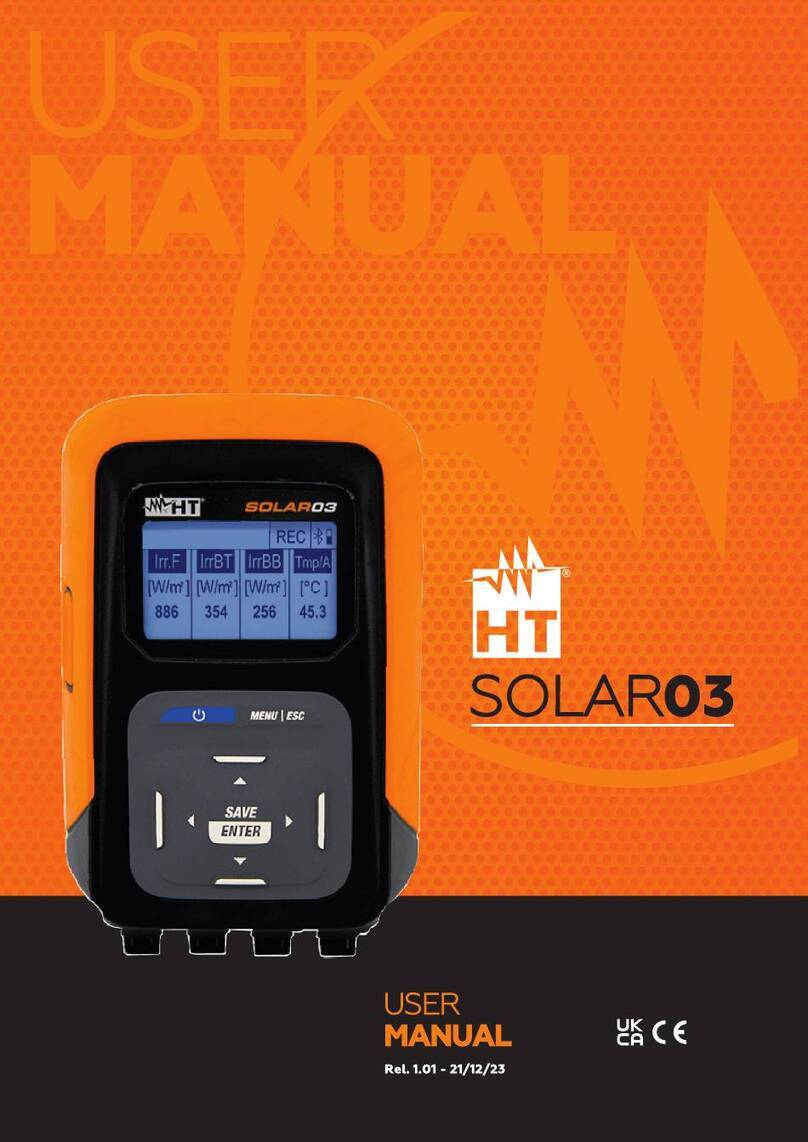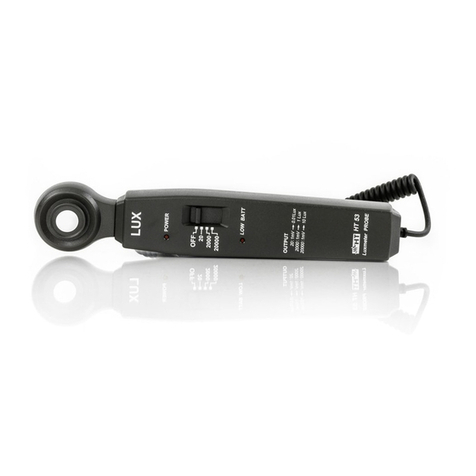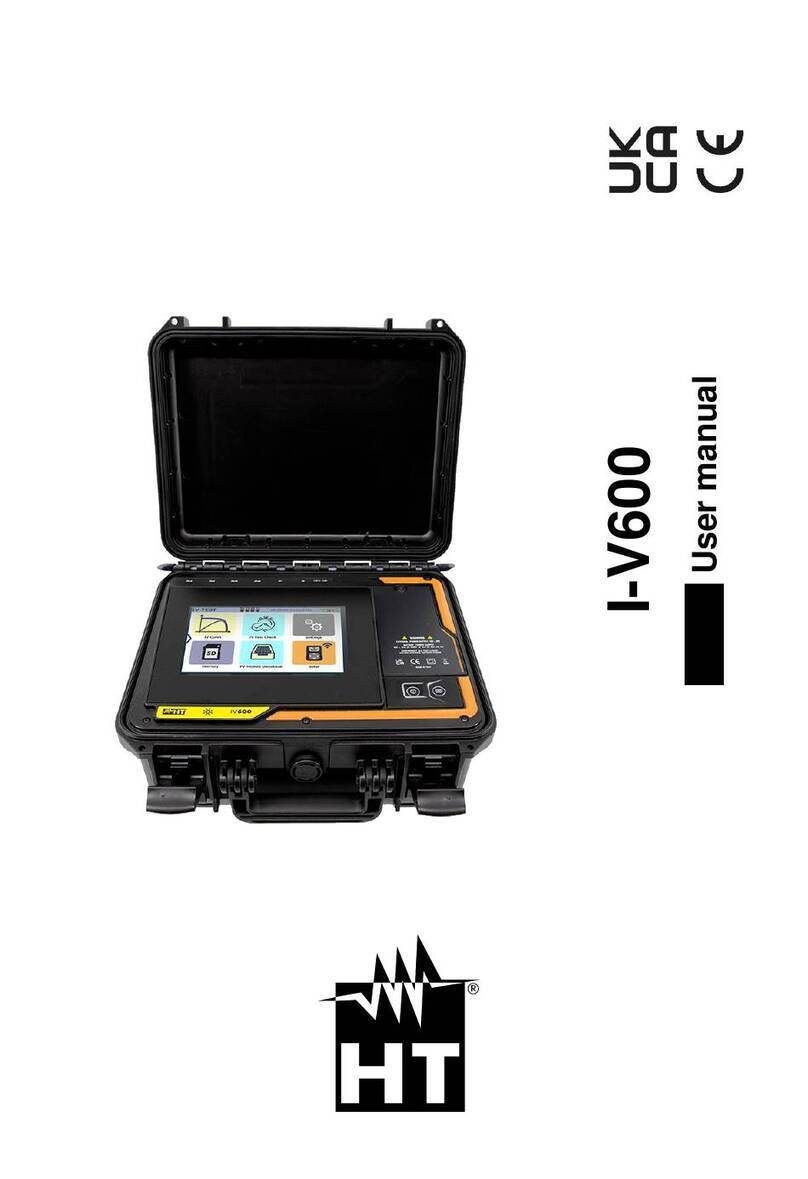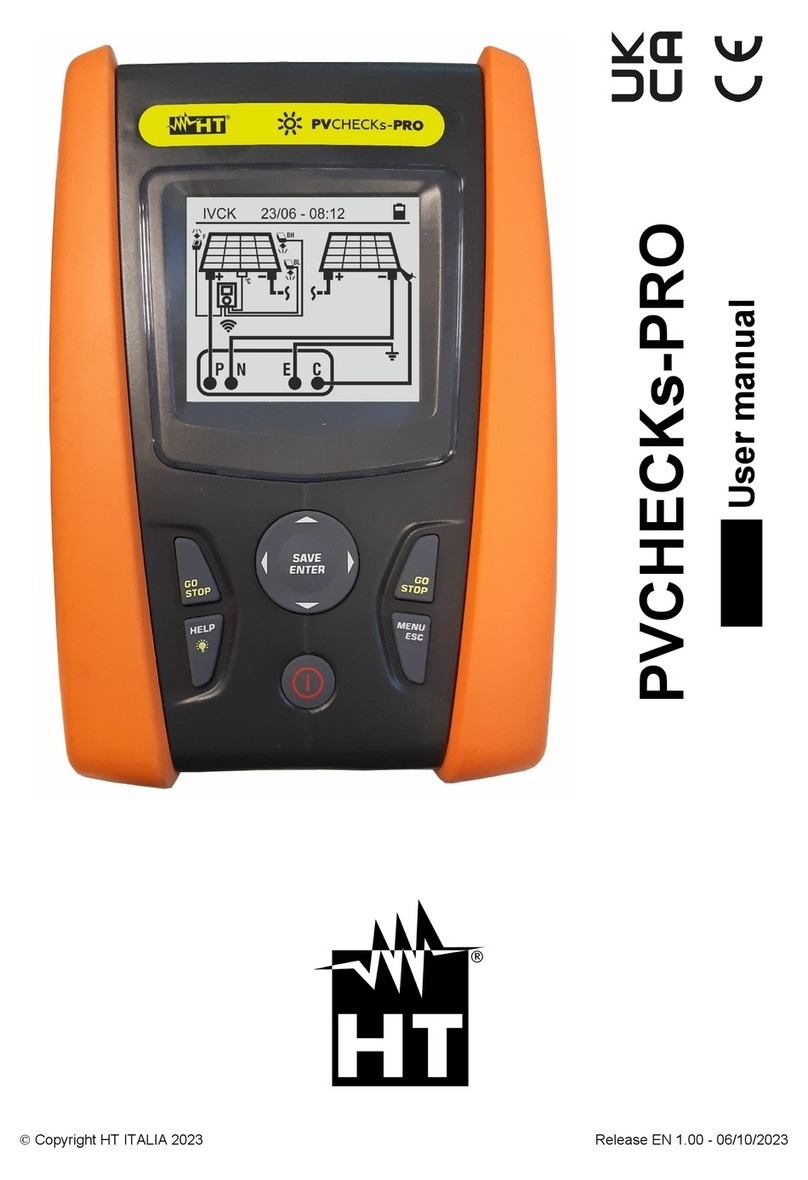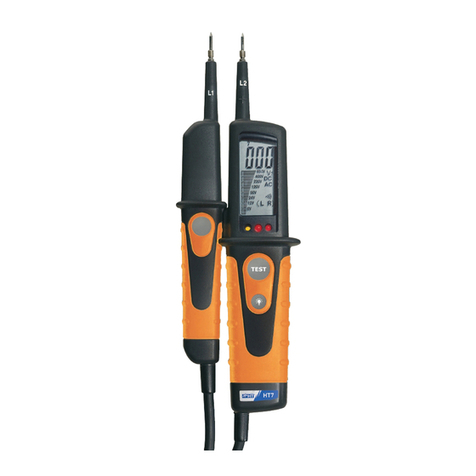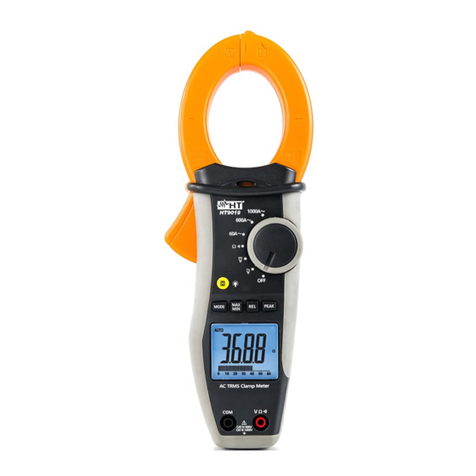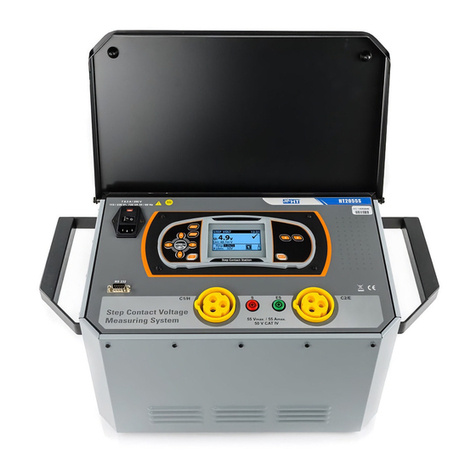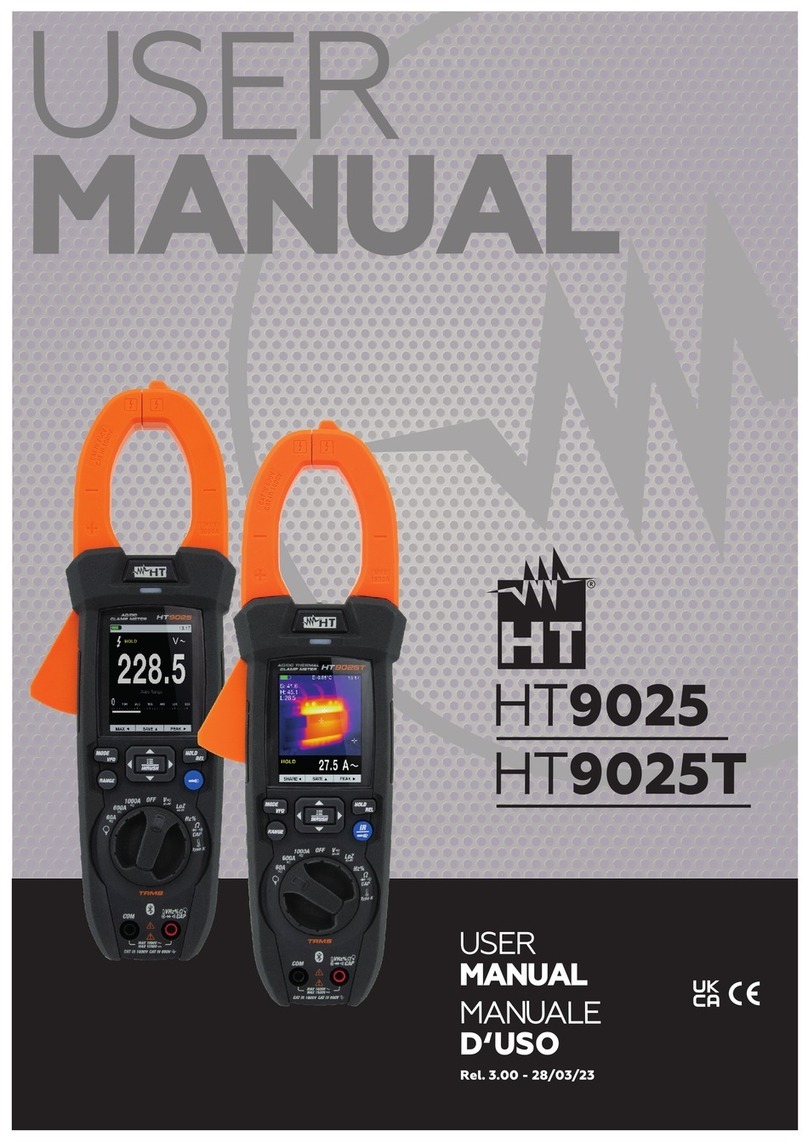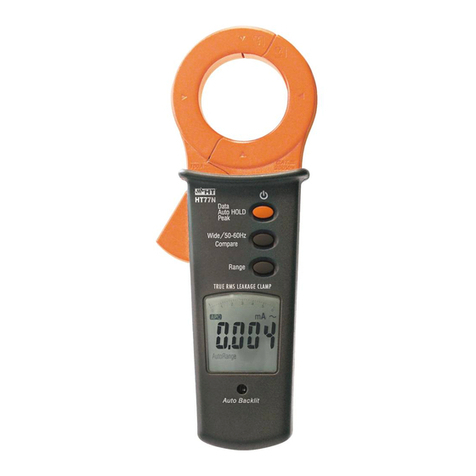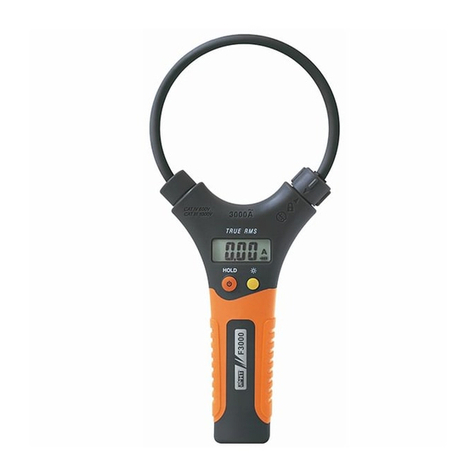
HT-5000
EN - 1
Indice:
1SAFETY PRECAUTIONS AND PROCEDURES ..........................................................2
2DESCRIZIONE GENERALE.........................................................................................3
3PREPARATION FOR USE ...........................................................................................3
3.1 Initial ......................................................................................................................3
3.2 Supply voltage.......................................................................................................3
3.3 Calibration .............................................................................................................3
3.4 Storage..................................................................................................................3
4OPERATING INSTRUCTIONS.....................................................................................4
4.1 Instrument description ...........................................................................................4
4.1.1 Description of the receiver RX5000 ............................................................................. 4
4.1.2 Display and control panel of RX5000........................................................................... 5
4.1.3 Description of transmitter TX5000................................................................................ 6
4.2 Connection and initial use of transmitter TX5000 ..................................................7
4.2.1 Transmitter signals and operation modes .................................................................... 7
4.2.2 Options for direct and inductive signal coupling........................................................... 8
4.2.2.1 Direct coupling on cables and pipes ................................................................................... 8
4.2.2.2 Coupling with special accessories .................................................................................... 10
4.2.2.3 Inductive signal coupling ................................................................................................... 11
4.2.2.4 Signal coupling in non-metallic pipes................................................................................ 13
4.2.3 Initial use of the transmitter TX5000 .......................................................................... 14
4.3 Use of receiver RX5000 ......................................................................................15
4.3.1 Modes of operation for the receiver RX5000 ............................................................. 15
4.3.1.1 Regulating the sensitivity level to match the reception signal strength............................. 16
4.3.1.2 Handling the receiver and locating the line ....................................................................... 17
4.3.1.3 Changing of the system settings ....................................................................................... 18
4.3.2 General site surveying ............................................................................................... 19
4.3.3 Determining the direction of a line.............................................................................. 20
4.3.4 Determining the depth of a line .................................................................................. 21
4.3.5 Functional test of the receiver .................................................................................... 24
5MAINTENANCE .........................................................................................................26
5.1 Replacement floor cap of the receiver RX5000 ...................................................26
5.2 Replacement batteries of receiver RX5000 .........................................................26
5.3 Replacement batteries of transmitter TX5000 .....................................................27
5.4 Cleaning ..............................................................................................................27
5.5 End of life ............................................................................................................27
6TECHNICAL SPECIFICATION...................................................................................28
6.1 Technical characteristics of receiver RX5000......................................................28
6.2 Technical characteristics of transmitter TX5000..................................................29
6.3 General specifications .........................................................................................29
6.4 Accessories .........................................................................................................29
6.4.1 Standard accessories................................................................................................. 29
6.4.2 Optional accessories.................................................................................................. 29
7SERVICE....................................................................................................................30
7.1 Warranty conditions.............................................................................................30
7.2 Service ................................................................................................................30














